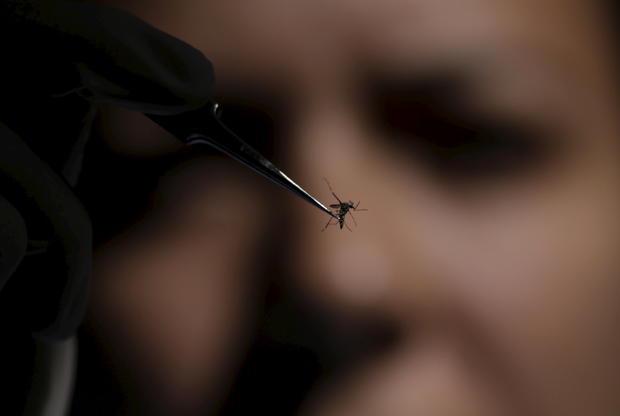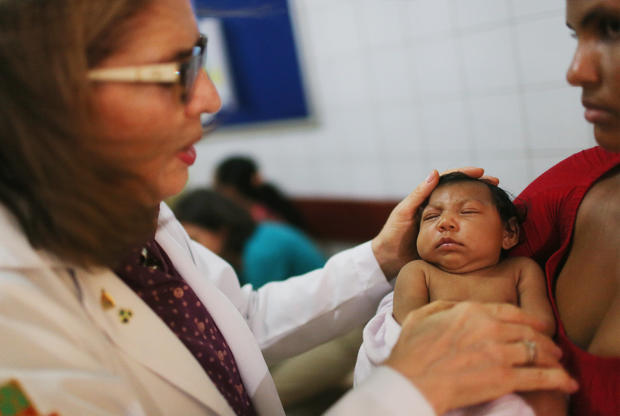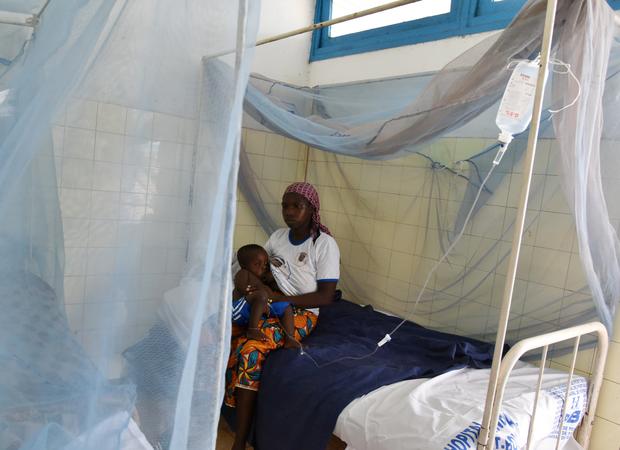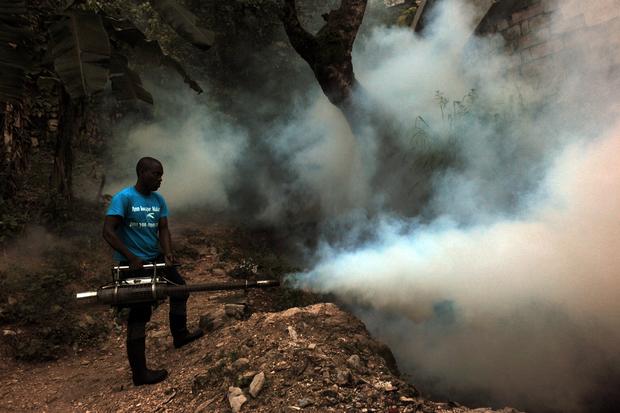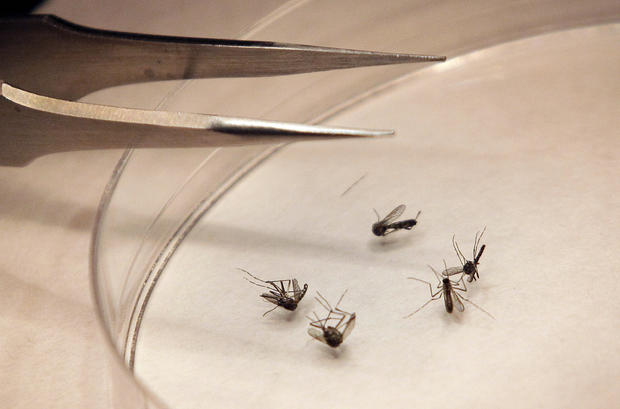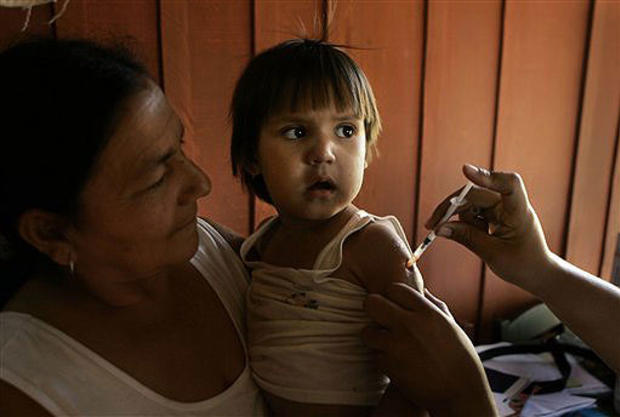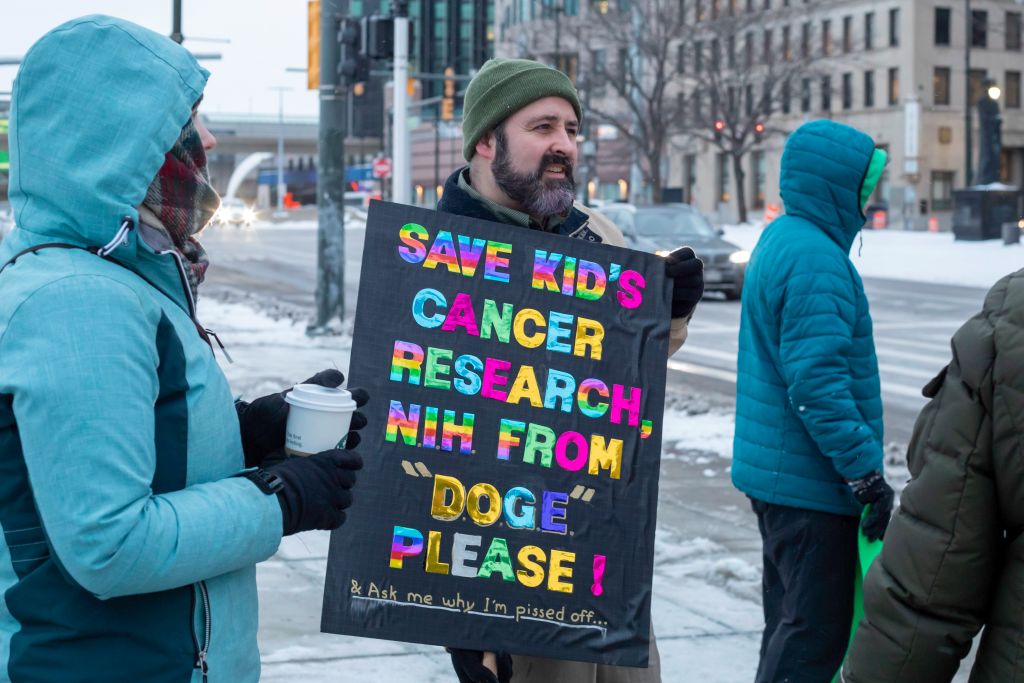Mosquitoes: "The most murderous animal on earth"
When you think of the world's most dangerous animals, an insect may not be the first thing that comes to mind. But the buzzing creatures we mostly think of as pests can actually be quite deadly.
According to the World Health Organization (WHO), the mosquito is the greatest menace of all disease-transmitting insects, causing several million deaths and hundreds of millions of cases of illnesses around the world each year.
"It's the world's worst killer. It's the most murderous animal on earth," Dr. Anthony Fauci, director of the U.S. National Institutes of Health's National Institute of Allergy and Infectious Diseases, told CBS News.
Zika virus is the latest mosquito-borne disease to make major news headlines, but a number of other illnesses can also be spread by mosquitoes who carry infections from one victim to the next. Click through to learn more about the greatest mosquito threats.
Zika virus
Concerns continue to grow over the mosquito-borne Zika virus, which is spreading rapidly through Central and South America and has been linked to birth defects and neurological problems.
The disease usually causes only mild illness and many of those infected do not experience symptoms at all, but Zika is considered a major threat to pregnant women. Health officials in Brazil believe the virus is responsible for a spike in the number of babies being born with abnormally small heads, a condition called microcephaly, which often results in brain damage.
Some people infected with Zika have also developed Guillain-Barré syndrome, an autoimmune condition which can cause at least temporary paralysis.
WHO is warning that there could be 3 to 4 million cases of Zika in the Americas over the next year.
So far the CDC reports there have more than 60 cases in the United States, all but one in travelers who contracted it abroad, and more are likely. However, Fauci said he said that he did not expect to see a major Zika epidemic in the U.S.
"If Zika acts like the other types of viruses that are mosquito-borne that we've had experience with, like dengue and chikungunya, we will see mini-outbreaks like in Florida and in Texas that can be well controlled with mosquito vector control. Hopefully we will not see anything worse than that, but we have to be very vigilant," Fauci told "CBS This Morning."
Malaria
Malaria strikes millions of people each year. This life-threatening disease is caused by Plasmodium parasites that are transmitted to humans through bites of infected mosquitoes.
In 2015, about 3.2 billion people -- almost half of the world's population -- were at risk of malaria, according to WHO. Most malaria cases and deaths occur in sub-Saharan Africa, but people in Asia, Latin America, and, to a lesser extent the Middle East and parts of Europe, are also at risk. Children are especially vulnerable.
According to the latest estimates, there were 214 million cases of malaria in 2015 worldwide and 438,000 people died as a result of the disease. The illness is preventable and treatable if caught early. As a result of prevention efforts, the rate of malaria fell by 37 percent globally between 2000 and 2015.
Dengue
Dengue is a mosquito-borne virus that causes severe flu-like symptoms, including sudden high fever, rash, pain behind the eyes, and severe muscle and joint pain. The illness can sometimes cause a potentially lethal complication called severe dengue.
According to WHO, the incidence of dengue has increased 30-fold over the last 50 years, with up to 50 to 100 million infections estimated to occur each year, putting nearly half the world's population at risk. Severe dengue epidemics first occurred in the 1950's in the Philippines and Thailand; today it has become a leading cause of hospitalization and death in Asian and Latin American countries.
Chikungunya
Chikungunya is a viral disease transmitted to people by infected mosquitoes that causes fever, severe and debilitating joint pain, muscle pain, headache, nausea, fatigue, and rash. There is no treatment for the illness, which varies in duration but can last for weeks. (Lindsay Lohan famously caught it last winter in French Polynesia.)
Though serious complications are uncommon, Chikungunya can contribute to cause of death, especially in older people.
According to WHO, Chikungunya has been identified in over 60 countries, and is mainly a threat in Africa, Asia, and the Indian subcontinent. The disease began spreading through the Caribbean in 2013 and some cases have been reported in the U.S. and Europe.
West Nile virus
West Nile virus is mainly transmitted through mosquitoes. It can lead to a fatal neurological disease in humans, though about 80 percent of people who are infected do not show any symptoms.
The virus is common in Africa, Europe, the Middle East, North America, and West Asia. Since coming to the U.S. in 1999, more than 30,000 people have been infected with West Nile virus in this country, according to the CDC. Of those, almost 13,000 have been seriously ill and more than 1,200 have died.
Health officials in California say the ongoing drought may have led to a spike in the number of cases there, as mosquitoes sought water in fewer, more concentrated areas.
Yellow Fever
Yellow fever is an acute viral disease transmitted to humans by mosquitoes, causing an estimated 30,000 deaths globally each year. Ninety percent of cases occur in Africa. Tropical areas of Latin America are also affected.
The "yellow" in the name refers to the jaundice -- yellowing of the eyes -- that some patients experience. Other symptoms include fever, muscle pain, headache, shivers, loss of appetite, and nausea or vomiting. About 15 percent of patients who seemed to be getting better enter a second, more toxic phase of the disease, which can cause abdominal pain, bleeding from the mouth, nose, eyes, or stomach, and loss of kidney function. Half of those who enter this phase die within 10 to 14 days, according to WHO.
Prevention efforts
When it comes to preventing mosquito-borne viruses, there are many steps that can be taken on both an individual and public health scale.
Experts say officials in affected areas should concentrate on active surveillance and mosquito control. "Namely to make sure that the mosquito vectors really are controlled, and you can do that by eliminating them and trying to eliminate them with insecticides," Dr. Anthony Fauci told CBS News when speaking about Zika virus.
Mosquitoes thrive and breed in standing water, so eliminating water collected in gutters, catch basins, stagnant pools and other areas can help keep them at bay.
Individuals can also take steps to protect themselves from mosquito bites. The CDC recommends the following tips:
- Cover exposed skin by wearing long-sleeved shirts and long pants.
- Use an insect repellent approved by the Environmental Protection Agency as directed.
- Higher percentages of active ingredients provide longer protection. Use products with the following active ingredients: DEET, Picaridin, oil of lemon eucalyptus (OLE), IR3535.
- For outdoor activities, use permethrin-treated clothing and gear, such as boots, pants, socks, and tents. You can buy pre-treated clothing and gear or treat them yourself.
- Stay and sleep in screened-in or air-conditioned rooms.
- Use a bed net if you are sleeping in an area exposed to the outdoors.
